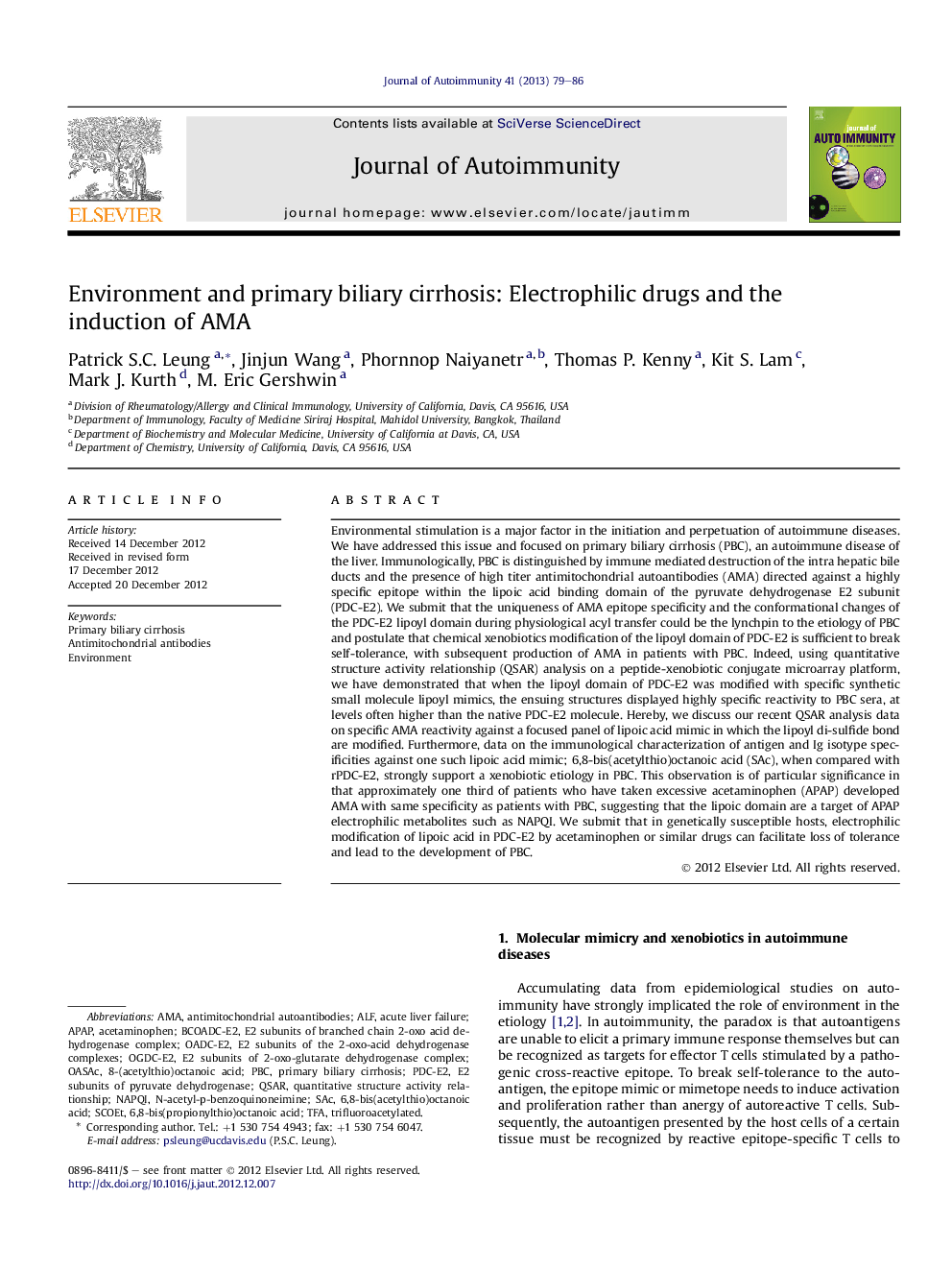| Article ID | Journal | Published Year | Pages | File Type |
|---|---|---|---|---|
| 3367901 | Journal of Autoimmunity | 2013 | 8 Pages |
Environmental stimulation is a major factor in the initiation and perpetuation of autoimmune diseases. We have addressed this issue and focused on primary biliary cirrhosis (PBC), an autoimmune disease of the liver. Immunologically, PBC is distinguished by immune mediated destruction of the intra hepatic bile ducts and the presence of high titer antimitochondrial autoantibodies (AMA) directed against a highly specific epitope within the lipoic acid binding domain of the pyruvate dehydrogenase E2 subunit (PDC-E2). We submit that the uniqueness of AMA epitope specificity and the conformational changes of the PDC-E2 lipoyl domain during physiological acyl transfer could be the lynchpin to the etiology of PBC and postulate that chemical xenobiotics modification of the lipoyl domain of PDC-E2 is sufficient to break self-tolerance, with subsequent production of AMA in patients with PBC. Indeed, using quantitative structure activity relationship (QSAR) analysis on a peptide-xenobiotic conjugate microarray platform, we have demonstrated that when the lipoyl domain of PDC-E2 was modified with specific synthetic small molecule lipoyl mimics, the ensuing structures displayed highly specific reactivity to PBC sera, at levels often higher than the native PDC-E2 molecule. Hereby, we discuss our recent QSAR analysis data on specific AMA reactivity against a focused panel of lipoic acid mimic in which the lipoyl di-sulfide bond are modified. Furthermore, data on the immunological characterization of antigen and Ig isotype specificities against one such lipoic acid mimic; 6,8-bis(acetylthio)octanoic acid (SAc), when compared with rPDC-E2, strongly support a xenobiotic etiology in PBC. This observation is of particular significance in that approximately one third of patients who have taken excessive acetaminophen (APAP) developed AMA with same specificity as patients with PBC, suggesting that the lipoic domain are a target of APAP electrophilic metabolites such as NAPQI. We submit that in genetically susceptible hosts, electrophilic modification of lipoic acid in PDC-E2 by acetaminophen or similar drugs can facilitate loss of tolerance and lead to the development of PBC.
► The human PDC-E2 lipoic disulfide bond is vulnerable to xenobiotic modification. ► A panel of modified lipoic acid conjugated to PDC-E2 was examined for AMA reactivity. ► Isotype specificities of AMA on SAc and PDC-E2 support a xenobiotic etiology in PBC. ► 35% of a ALF patient cohort with APAP (an electrophilic drug) overdose developed AMA. ► Electrophilic modification of PDC-E2 could facilitate the loss of tolerance in PBC.
